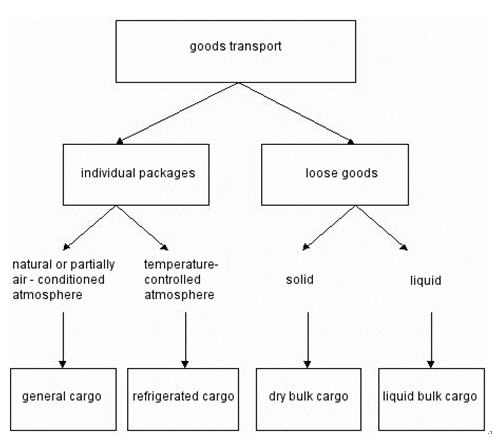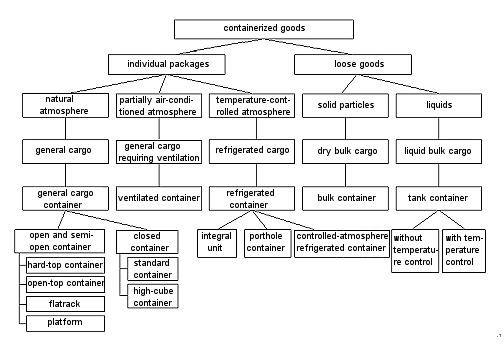Most changes occurring during transport, handling and storage operations are unwanted and considered damage. Only a few changes, such as postfermentation of tobacco, tea, green coffee beans and raw cocoa or ripening of cheese, are desirable changes, and even these may turn into unwanted changes if the processes are not properly controlled.
Cargo properties are understood to be the typical properties of a cargo, describing its characteristic features and characterizing its specific functions, its utility value and its quality, i.e. a cargo is described by a large number of properties.
Transport properties merely cover the properties of a cargo which need to be taken into account so as to ensure loss-free transport, including handling and storage operations.
In practice, a distinction is drawn on the basis of structure between individual packages and loose goods (see Fig. 55). Loose goods consist either of solid particles (dry bulk cargo) or liquids (liquid bulk cargo), from which the appropriate container types (bulk container, tank container) may be deduced.
Individual packages are known as general cargo, which may be divided, depending on atmosphere requirements (natural, partially air-conditioned or temperature-controlled atmosphere), into general cargo, general cargo requiring ventilation and refrigerated cargo, which place corresponding requirements on containers (general purpose container, ventilated container, refrigerated container), or indeed into further sub-categories (see Figs. 55, 56).
Figure 55: Classification of goods to be transported

Figure 56:
Flowchart of container types according to requirements of goods to be transported









